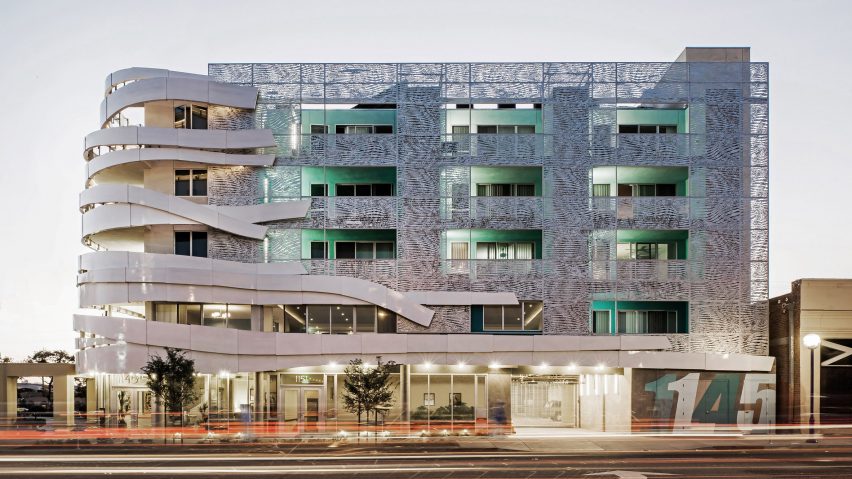
La Brea Affordable Housing in West Hollywood is a contemporary take on art deco
Providing homes for people with disabilities and formerly houseless LGBTQ+ youth, our next Social Housing Revival case study set out to prove that low-cost housing in the US can look as good as upscale apartments.
Located in West Hollywood, the La Brea Affordable Housing complex, designed by architects Patrick Tighe and John Mutlow, is a five-storey, 50,000 square foot (4,650 square metre) mixed-use building completed in 2014 for the non-profit West Hollywood Community Housing Corporation.
Tenants of its 32 residential units include people living with disabilities, young LGBTQ+ people with experience of homelessness and those living with AIDS and HIV.
Distinctive oversized ribbons wrap around a corner of the building's facade, which is also punctuated by aquamarine-clad balconies. A landscaped courtyard and seating area forms the heart of the complex.
"The design is actually quite simple," Los Angeles architect Mutlow told Dezeen.
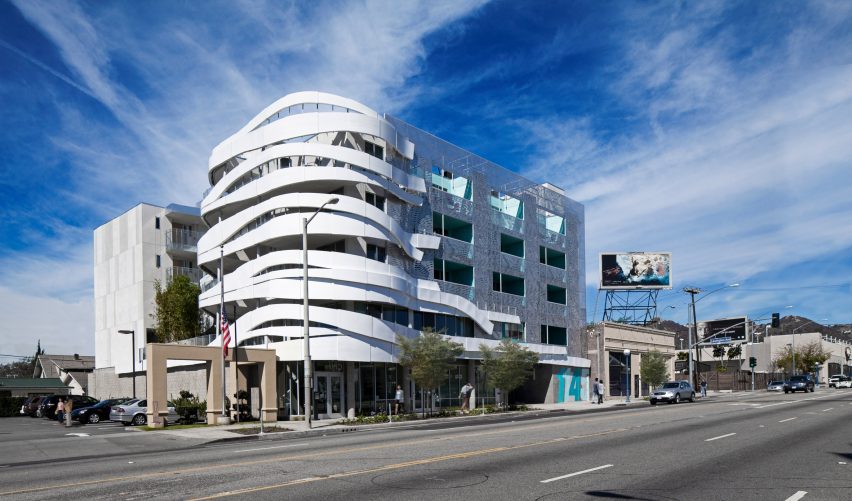
"There were three items," he explained. "One was a design that fits into context, one was respecting environmental issues, and one was social."
Sited on La Brea Avenue, a prominent north-south artery in a diverse part of the city known for its multicultural shops and restaurants, the building's adventurous facade was informed by surrounding 1930s art deco buildings.
"If you go up and down La Brea, you'll find some absolutely wonderful art deco buildings," said Mutlow.
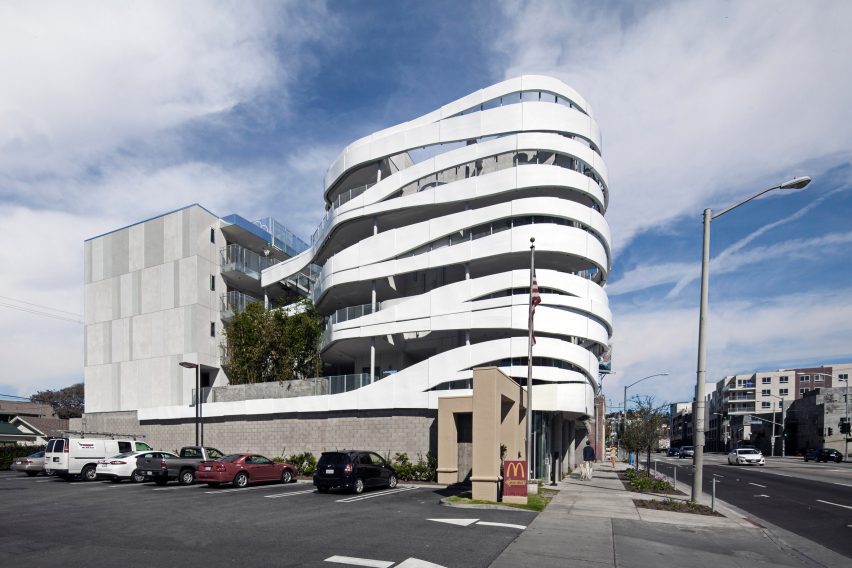
"We were trying to fit into that environment – a preservation environment which you respect and love, rather than fitting into a slightly more mundane environment."
Both the client and designers also sought to create housing that appeared to be market-rate, and beyond that, a building that could be recognised as a "positive" addition to the community.
"The housing needs to look like it's market-rate housing," Mutlow said. "It doesn't need to be identifiable as something other than what would fit into a normal environment."
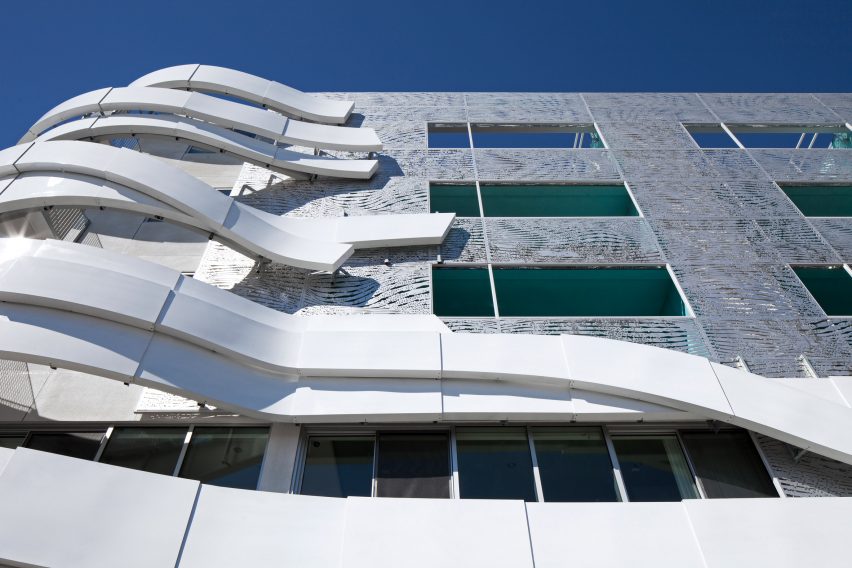
"We wanted to give the building an identity as being a positive attribution to the context for a long period of time," he added. "Then there's no kind of sense of 'oh, we have to walk by this project quickly because it's an affordable housing project'."
That is important in a city like LA where, despite a huge need for more affordable housing, it has historically been difficult to get such projects delivered.
Rather than simply seeking to blend in, Mutlow and Tighe enabled the building to stand out by partially wrapping it in distinctive white ribbons.
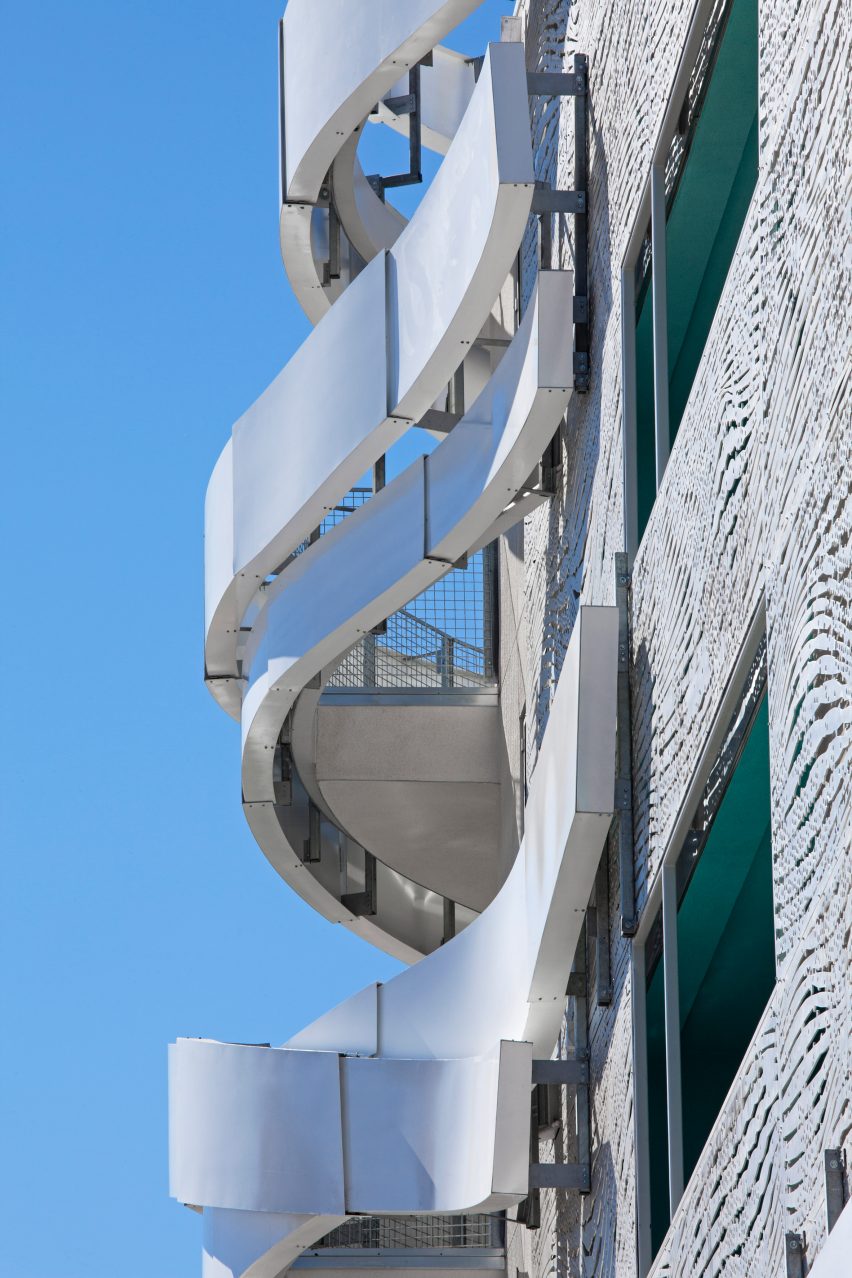
One reason for this was to create a visual marker for drivers as they travel along La Brea, another was to mark the building's entrance and lobby, which sits directly underneath the ribbons, and a third was a subtle nod to the red ribbon associated with HIV and AIDS awareness.
"We wanted to have a relationship with HIV," said Mutlow. "But not what would be known as a 'ribbon environment'. It's a subtle relationship."
A fourth reason for the ribbons was to partially enclose a series of balconies and the building's main circulation, the access to which is located in the small ground-floor lobby.
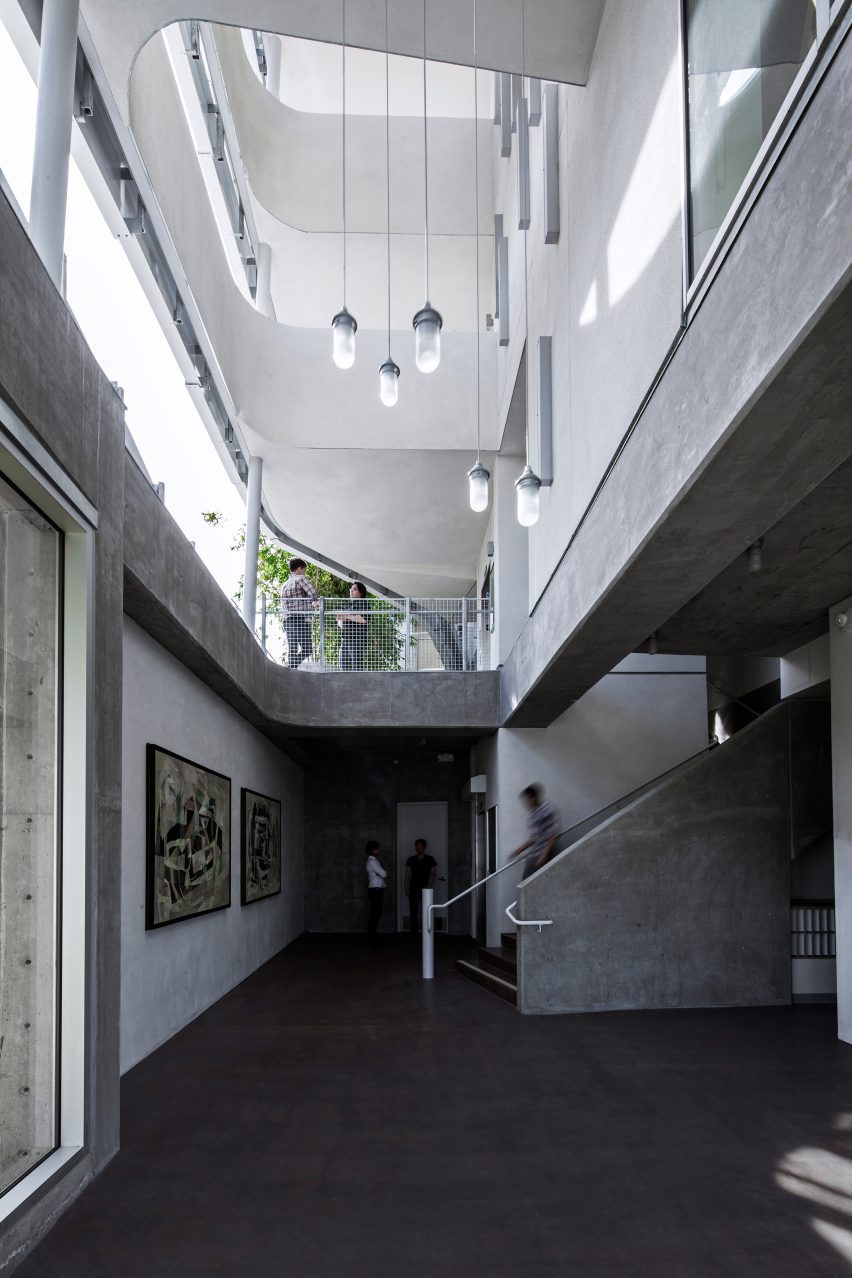
While the lobby appears to be enclosed by glass from the street, the space is in fact open-air, with the exterior bands visible from the inside. Parking space and the non-profit Aids Project Los Angeles is also located on the ground floor.
Like the interior courtyard and private balconies attached to each apartment, the open-air space is intended to create a connectedness with the outdoors, as well as between residents.
"In southern California you can have this inside-outside relationship," said Mutlow.
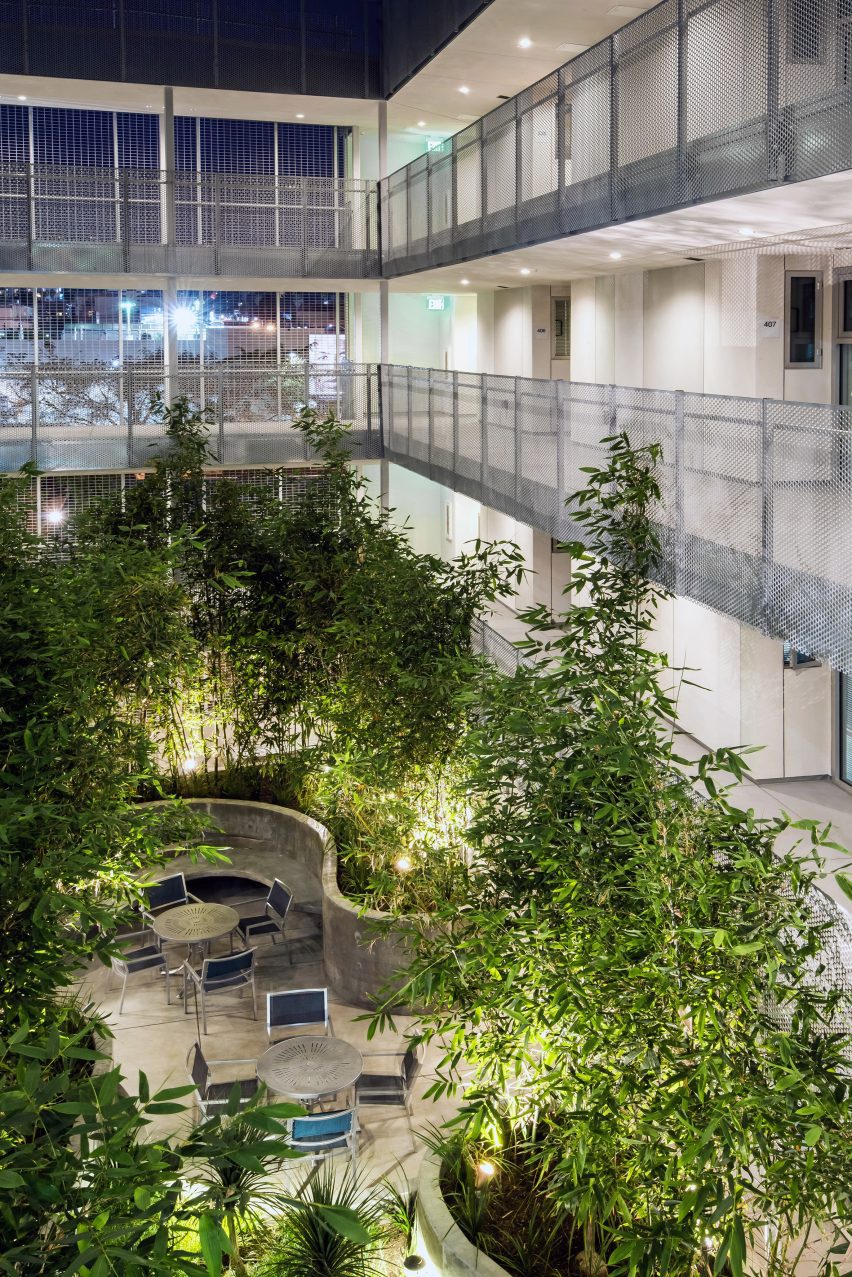
"What we want to do is reduce isolation for people that have a disability, to encourage them to not be in their unit but to come out to social space."
The interior courtyard, which features curvaceous planting beds and seating, is oriented on a north-south axis, exposing it to more sun in the winter and more shading in the summer.
Each private balcony is located along the building's front and back facades, while windows placed in the kitchens look out over the interior space.
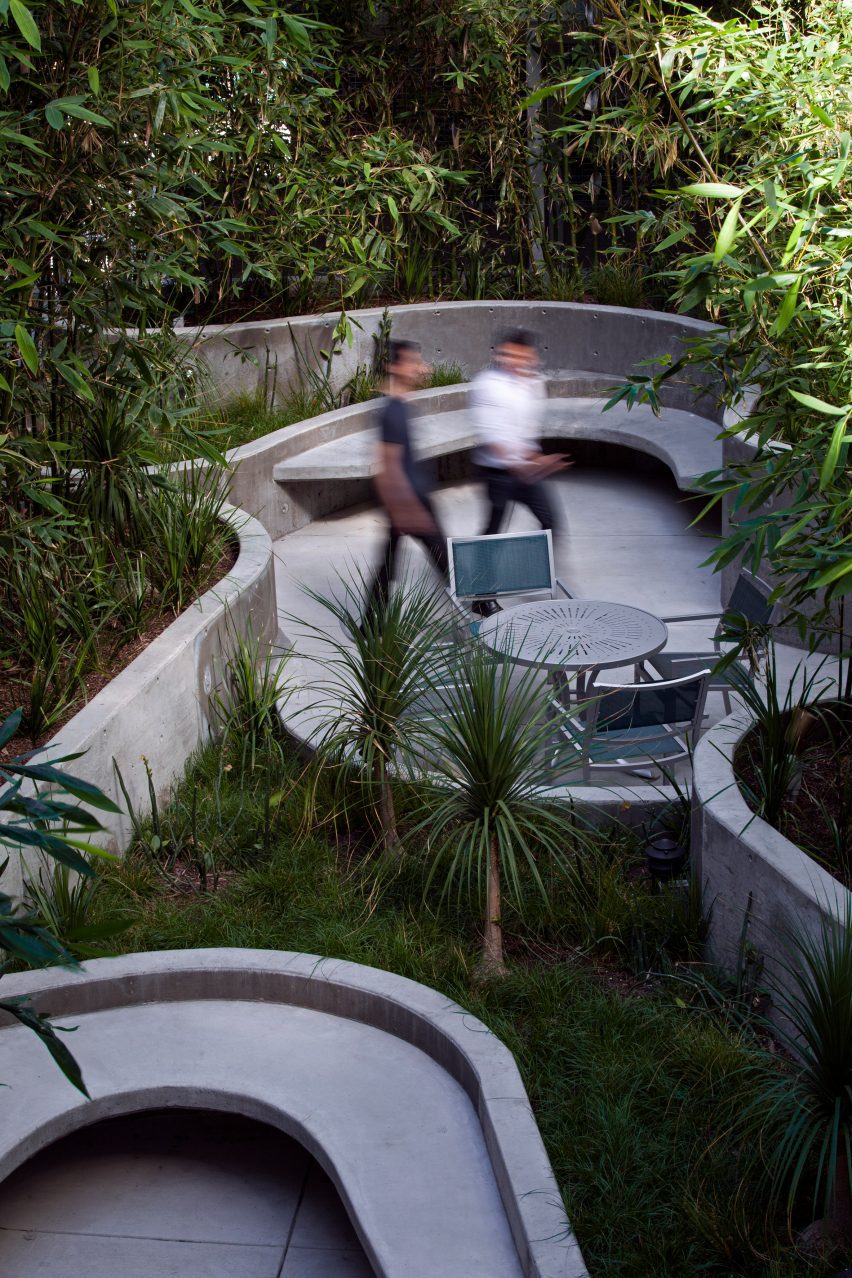
The arrangement provides not only cross-ventilation but a visual connection to the street and courtyard, which Mutlow believes is an important factor in designing housing as it leads to tenants feeling at home in a space and ultimately, caring for it.
"When you shut your front door, you don't shut off the courtyard," he said. "You don't shut off the 'social'. You can, because you have a drape, but you have a certain choice in terms of how much social interaction you actually want."
"It's trying to give some choice to the occupants. It's all part and parcel of this sense of the residents feeling this is their home – not just a rental project that someone else's providing for them. It's their place."
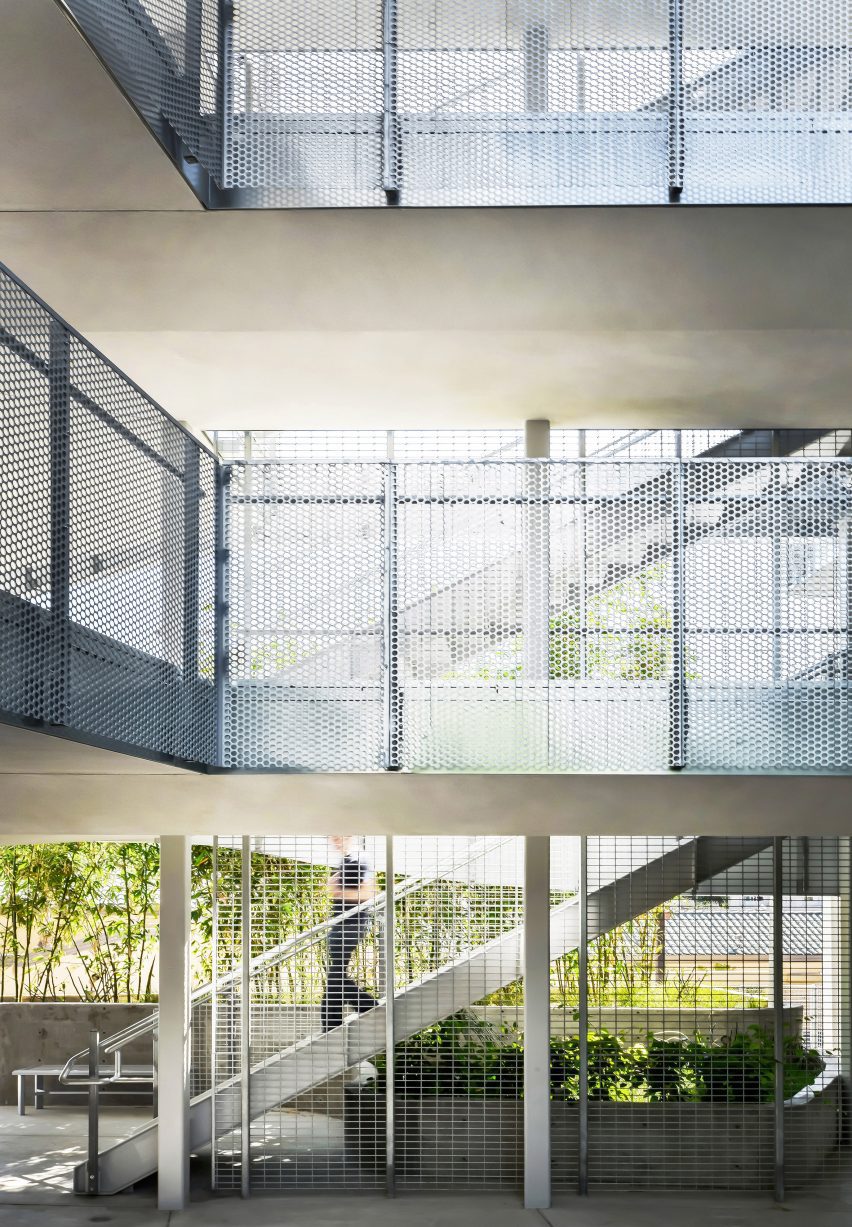
Accessible elements were incorporated into each unit, ranging from doorbells that ring with light and sound, push-button doors and rangehood operations placed on the front of the stove so those in wheelchairs don't have to reach their hands across burners.
Additionally, 75 per cent of the unit's electricity, as well as hot water, comes from solar panels on the roof, cutting utility costs for tenants.
Mutlow, who has specialised in affordable senior and housing design for 30 years, says that over time he's seen more funds dedicated to affordable housing projects in Los Angeles, although this has shifted from federal to local sources.
"When I first started, the majority of the funds came from the federal government," he said. "Now, a much larger chunk of the funds come from the state, but also from the counties in the cities."
"Affordable housing has a source of funds now at a local level, more than it ever had before."
He also pointed to a rise in hotels and office buildings being converted into affordable housing across the country, similar to the city of Chicago's recent plan to adapt abandoned buildings into affordable housing, as evidence of changing approaches to delivery.
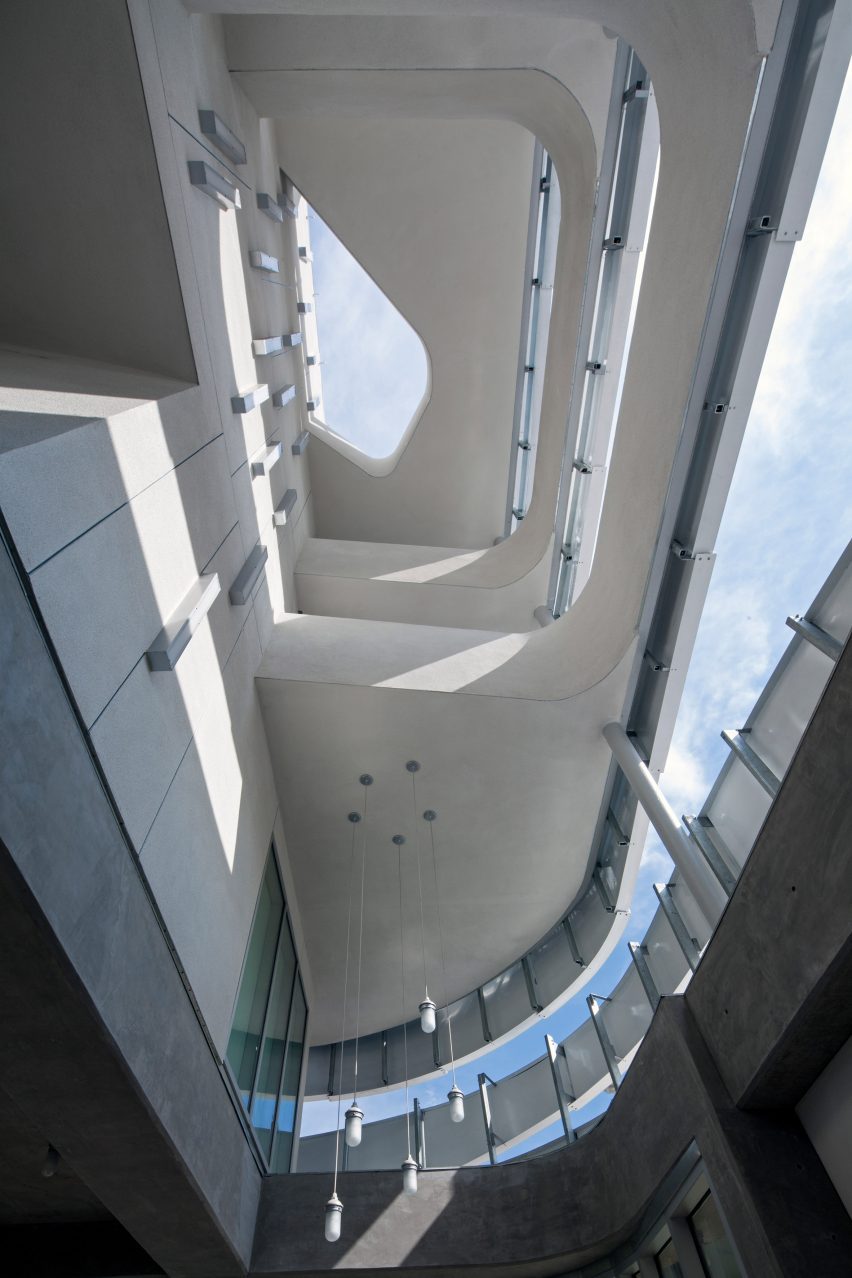
Ultimately, however, Mutlow is doubtful about whether LA's homelessness problem can be solved in the near future.
"When people say they're going solve the housing problem, I back off and take a break," he said.
"I'm not sure if it's ever going to be solvable because it's not just housing that is the issue, it's also support services and employment, and the jobs aren't necessarily there."
"In other words, the influx is equaling the ability of the county, the city or non-profits to produce affordable housing. It's kind of a never-ending roundtable."
The photography is by Art Gray unless otherwise stated.
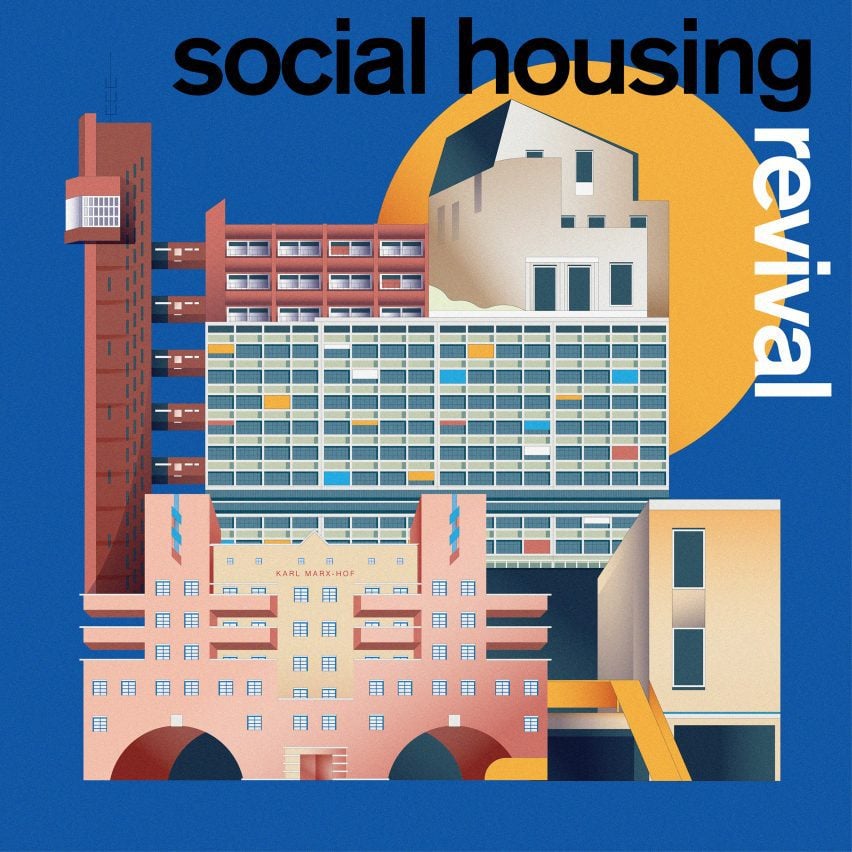
Social Housing Revival
This article is part of Dezeen's Social Housing Revival series exploring the new wave of quality social housing being built around the world, and asking whether a return to social house-building at scale can help solve affordability issues and homelessness in our major cities.